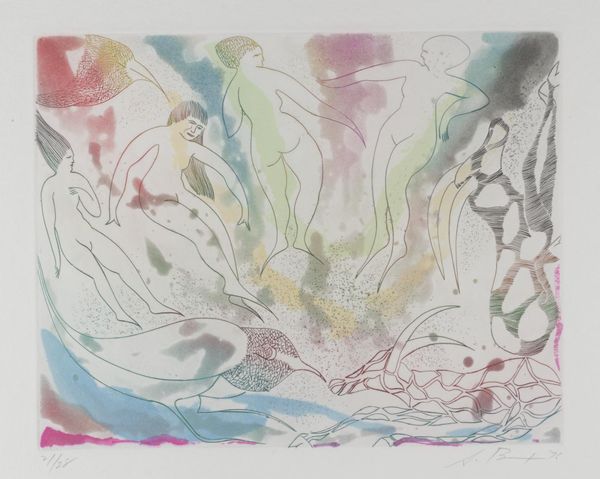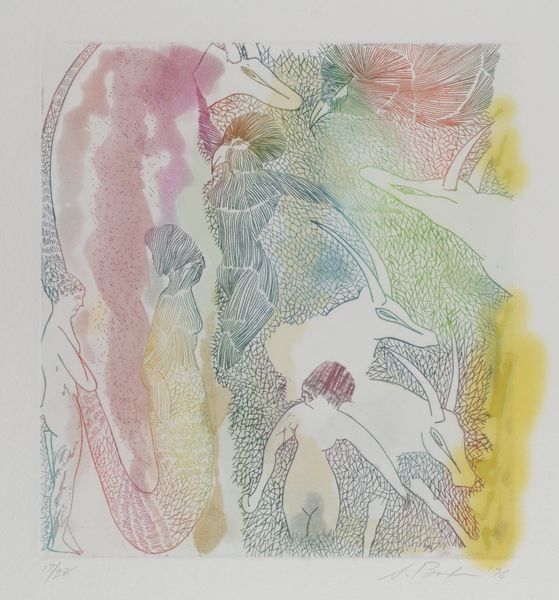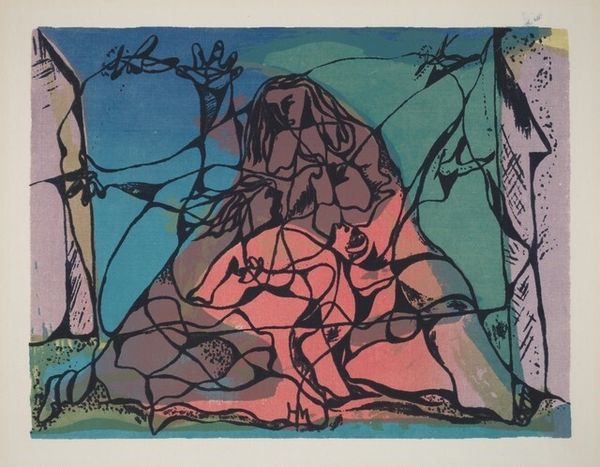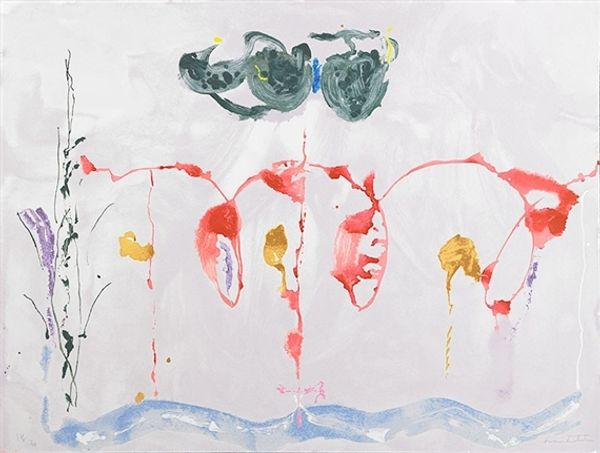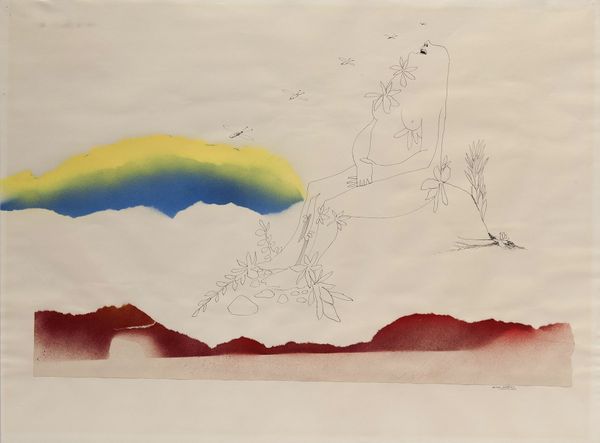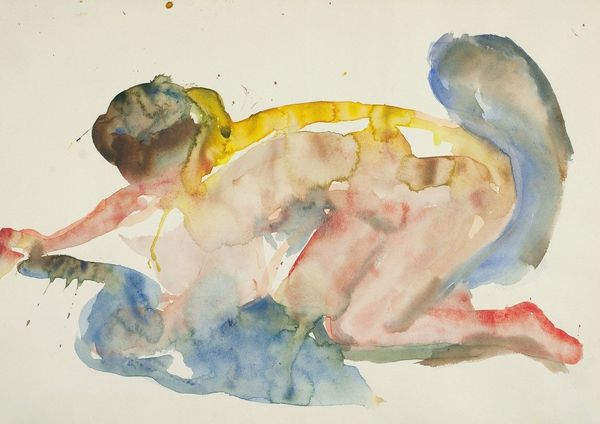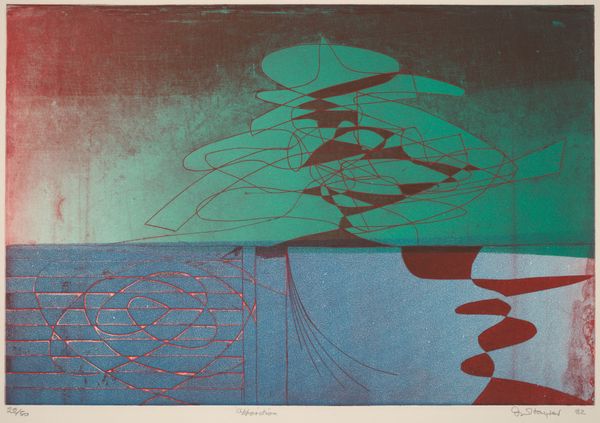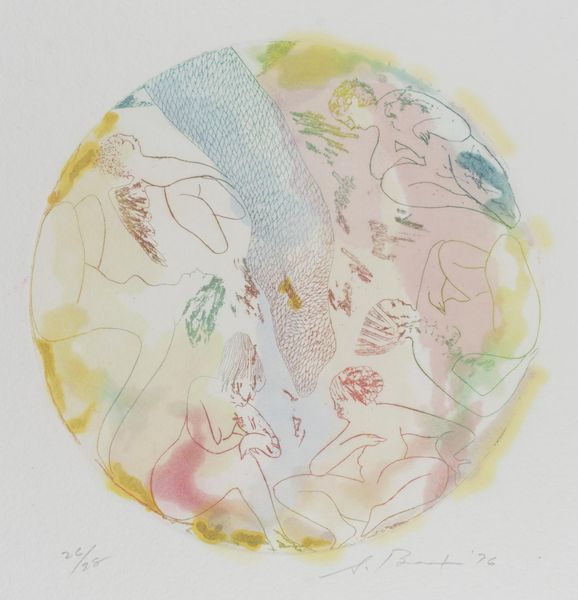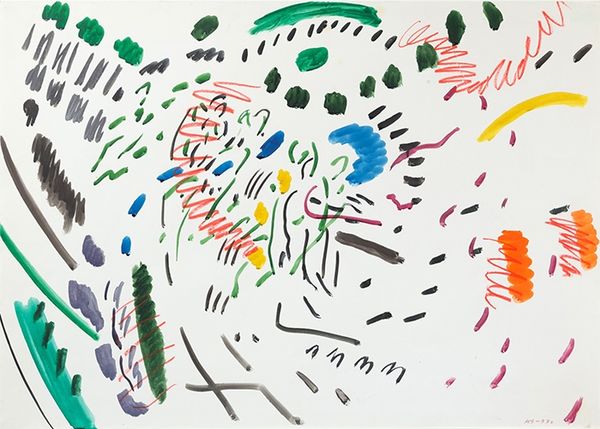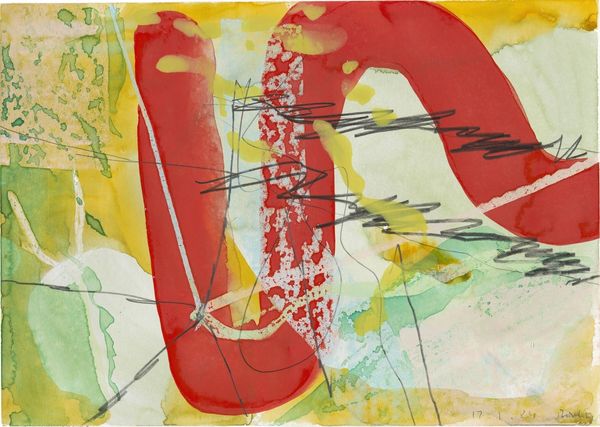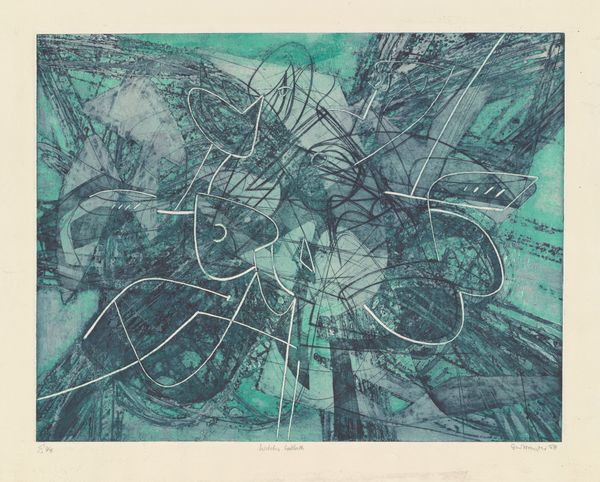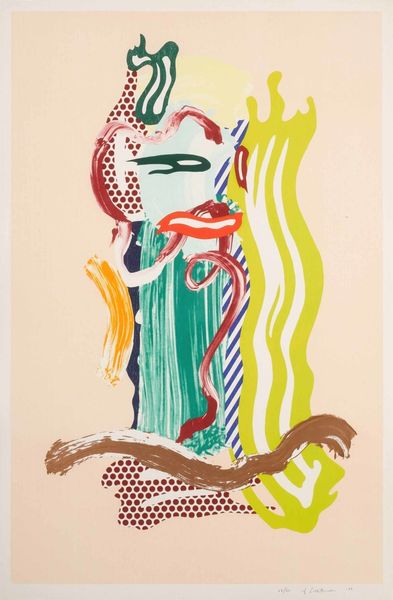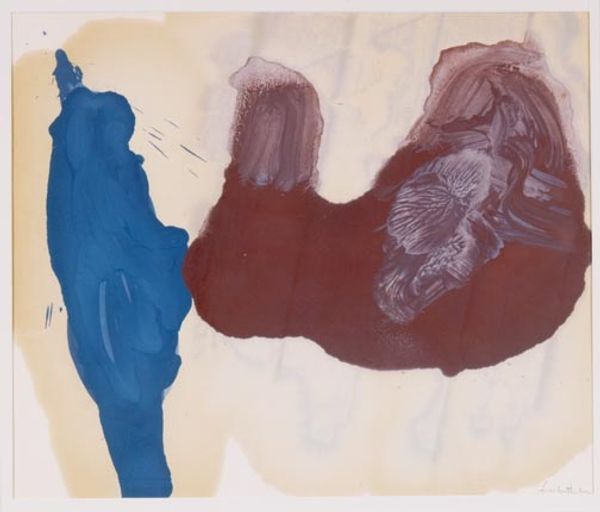
Dimensions: image: 281 x 378 mm
Copyright: © The estate of Stanley Boxer | CC-BY-NC-ND 4.0 DEED, Photo: Tate
Editor: This is Stanley Boxer’s "Pauseofnoconcern," held at the Tate. It’s an etching, and feels dreamlike, almost mythic. What symbols stand out to you in this piece? Curator: The horses, the figures...they echo ancient pastoral scenes, perhaps a classical Arcadia. But consider the title: "Pauseofnoconcern." Is this a true idyll, or a commentary on one? Do the figures represent carefree innocence, or a detachment from something looming? Editor: That’s a fascinating point. The horses seem to represent freedom, but the title introduces a sense of unease. Curator: Exactly! Boxer is prompting us to question the layers of meaning embedded in these familiar symbols. It’s a powerful juxtaposition. Editor: I see it now! It's not just a pretty picture, but a challenge to our assumptions about beauty and tranquility.
Comments
Join the conversation
Join millions of artists and users on Artera today and experience the ultimate creative platform.
tate 6 months ago
⋮
Stanley Boxer is best known for his large scale abstract paintings which have a rich sculptural quality produced by thick, impasto brushwork. Boxer’s paintings were championed by American modernist critic Clement Greenberg (1906-1994), famous for his insistence that painters should eliminate subject matter in their work, aiming instead for the purity of abstraction. When considered in relation to his paintings, the prints Boxer produced at Tyler Graphics between 1975 and 1979 seem somewhat of an anomaly. Over this period, he created several series of figurative works, illustrating whimsical scenes featuring animals and winged figures. Boxer had, however, been making drawings of this nature throughout his career, and he insisted they were closely connected to his abstracts, made with similar gestures and motivation.
